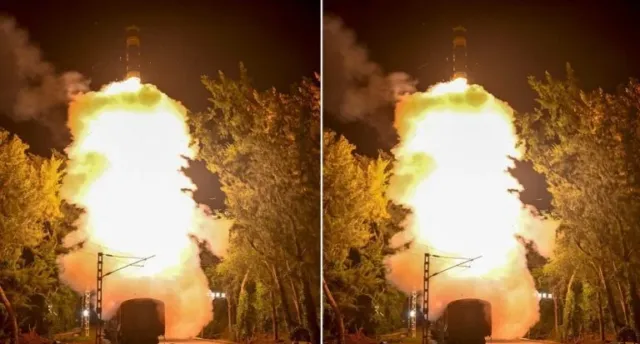
India took a significant step in strengthening its strategic deterrence with the successful rail-based launch test of the Agni-Prime (Agni-P) missile conducted by the Defence Research and Development Organisation (DRDO). This trial validated the missile’s adaptability to diverse launch platforms, particularly its ability to operate from rail-mobile systems, ensuring greater mobility and operational flexibility.
The Agni-Prime missile is a new-generation, canisterised ballistic missile that bridges the gap between Agni-I and Agni-II in India’s strategic arsenal. With a range of up to 2,000 kilometers, it can carry nuclear as well as conventional warheads. Its two-stage solid-fuel propulsion provides reliable performance, while the advanced Ring Laser Gyroscope (RLG)-INS coupled with GNSS ensures pinpoint accuracy.
| Feature | Details |
|---|---|
| Name | Agni-Prime (Agni-P) |
| Developer | Defence Research and Development Organisation (DRDO), India |
| Type | Intermediate-Range Ballistic Missile (IRBM) |
| Range | Up to 2,000 km |
| Propulsion | Two-stage solid-fuel rocket |
| Guidance System | RLG-INS, micro-INS, digital control, multi-GNSS |
| Payload | MIRV capable, nuclear / high-explosive warheads |
| Launch Platforms | Road-mobile, canisterised systems, and rail-based launcher |
| Weight & Dimensions | ~11,000 kg; length ~10.5 m; diameter ~1.15 m |
| Key Advantage | Rapid deployment, high mobility, survivability, reduced detection |
A notable feature of the missile is its MIRV capability, which allows it to strike multiple targets with a single launch. The canisterised design not only reduces launch time but also enhances mobility across varied terrains. With the recent rail-based trial, India has demonstrated its capacity to launch missiles from mobile rail systems, thereby reducing predictability and increasing survivability of its deterrent forces.
This successful test further cements India’s position as a nation capable of deploying flexible and survivable missile systems, ensuring a credible second-strike capability and strengthening its overall strategic deterrence posture.




